We had been talking about the possibility of homeschooling for a while when my mom randomly bought us a book called Teach Your Child to Read in 100 Easy Lessons. The book had been on a good sale and had great reviews, so she bought it and asked if we were interested in using it. We looked through it, and it looked pretty dry, like a textbook. Now that I think about it, most of my textbooks actually looked more exciting than this book. But we figured we’d take it and give it a shot when the time was right. Well, as it turned out, that time came sooner than we expected.
Our T didn’t seem ready to read at the time we received the book, but he LOVED the alphabet; he loved any book or puzzle that had to do with ABCs. A while later, around the time T turned 3, my husband picked up the book and started to read the introduction. I decided I should know how to use the book too, so I read all the introduction pages, and realized that it didn’t seem unrealistic after all. I asked T if he wanted to learn how to read, and he was enthusiastic about it, so we jumped in.
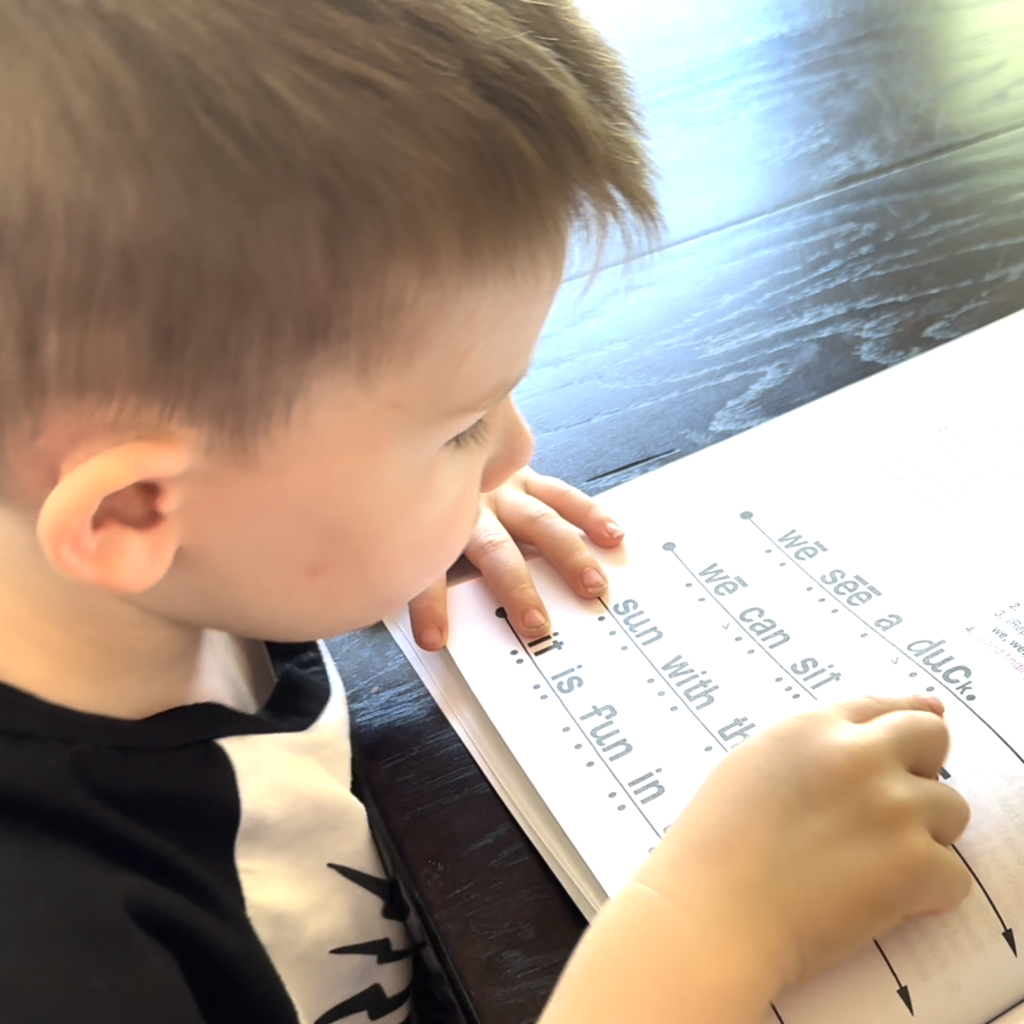
It took a few lessons for T (and me) to get the hang of the book’s teaching approach, but I could tell very early on that the program was genius. It doesn’t look flashy or fun, but it was proving to be so effective that T got a lot of joy and a sense of achievement from it. Before long, he was begging ME to do reading lessons. He sincerely enjoys learning how to read and is very self-motivated. But we did establish a reward system at the beginning of the program that we think helped jumpstart his interest and re-motivate him when necessary.
We’re still working through the book (T just finished his FIFTIETH lesson!), but I’d love to tell you a little bit about it so you can consider whether you’d like to give it a shot too!
First of all, the cover of the book states, “This remarkable step-by-step program teaches your child to read in just 20 minutes a day–with love, care, and joy a parent and child can share!” This 20-minute timeframe is pretty accurate at the start, but as passages have gotten longer and more complex, we have found that lessons usually take a little longer. That’s been fine for us, as T has a pretty impressive attention span for a 3 year-old, but we’ve also found it helpful to split lessons into two parts as needed (or even do two in a day sometimes if he’s feelin it!).
The book has a wonderful introduction that you shouldn’t skip! It explains the how and why to everything from the “funny print” and the teaching script to giving correction. As I read the introduction and started doing the first few lessons with T, I was floored by how well thought-through this program is. These people have seriously done their research on what works and know what they’re talking about.
Skills your child will Learn
In the first 16 lessons, you will begin teaching your child the following:
- new sounds (m, s, a, ē, t, r, d, i, th). There’s a handy pronunciation chart that tells you how to say each sound, in the order they appear in the book!
- blending sounds together
- saying words slowly and saying them fast
- rhyming
- guided word and story reading
- picture comprehension
- irregular words (“is”)
As the lessons progress, your child will learn more complex skills:
- more sounds and irregular words
- reading with expression
- word finding / whole word recognition
- quotation finding
- story reading and comprehension
- “ed” and “ing” endings
- long vowels
As the lessons go on, the special aids the book provides are slowly phased out, such as the special script. Things like upper case letters are also phased in.
Some Things I’ve Loved about the Book
- the print! It’s so intuitive for kids. For example, the “silent” letters are in smaller font, so they know not to sound them out, but they are exposed to seeing the words spelled correctly so it is an easier transition to regular print. Sounds like “sh” are introduced as one connected character, and then gradually transition to the traditional type.
- the script. While it is encouraged to read through and practice each lesson before you teach it, you can absolutely get by without doing so, because the book clearly lays out everything you need to do and say on every page in clear, distinctive type. No prep time necessary!
- It teaches skills that are sometimes overlooked. Specifically, sound blending and reading comprehension. So many kids know their phonics but have a hard time combining them into words, and then combining words into ideas that actually mean something. This book teaches those skills from the very beginning so they become second nature.
- no fluff. There’s nothing in the book to distract from the task at hand and you don’t waste time doing anything nonessential. But don’t worry–if you teach with expression, it is still fun! And I would always recommend pairing a reading program such as this one with “real-life” reading such as road signs and cereal boxes, as well as picture books. Here are some of our favorites right now.
I have very few negative things to say about this book, but I have noticed a few very minor typos; you would totally miss them if not reading carefully. There have also been a couple occasions in which I felt a word or sound was introduced for reading before it was adequately taught. For example, we came across the word “kitten” before the “eh” / “ih” sound at the end of the word was introduced. Occurrences like this are rare and pretty easy to ad-lib and move on when they do happen.
All in all, we would absolutely recommend this book to anyone with a child who has a happy temperament, a decent attention span, and a desire to read! For children who don’t fit that description, we still believe it’s a great program, but I would probably expect to make more adjustments to fit your child’s personality!

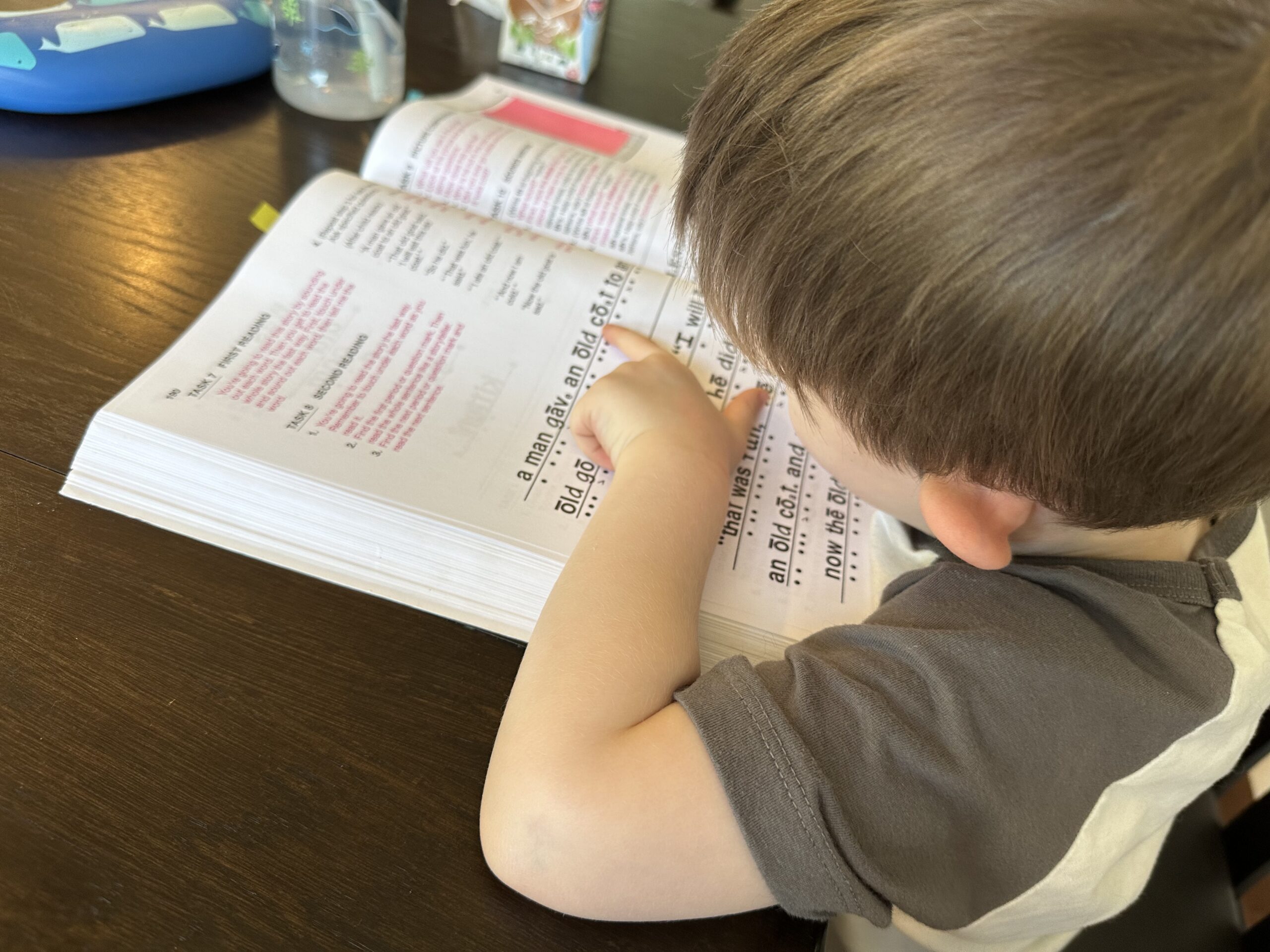
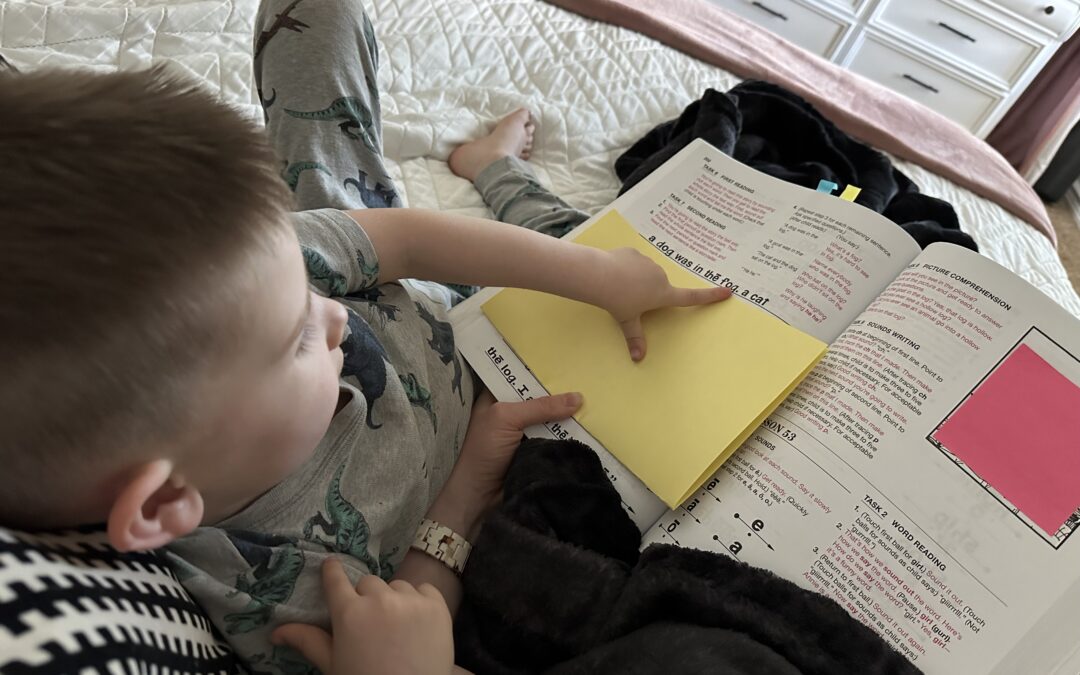
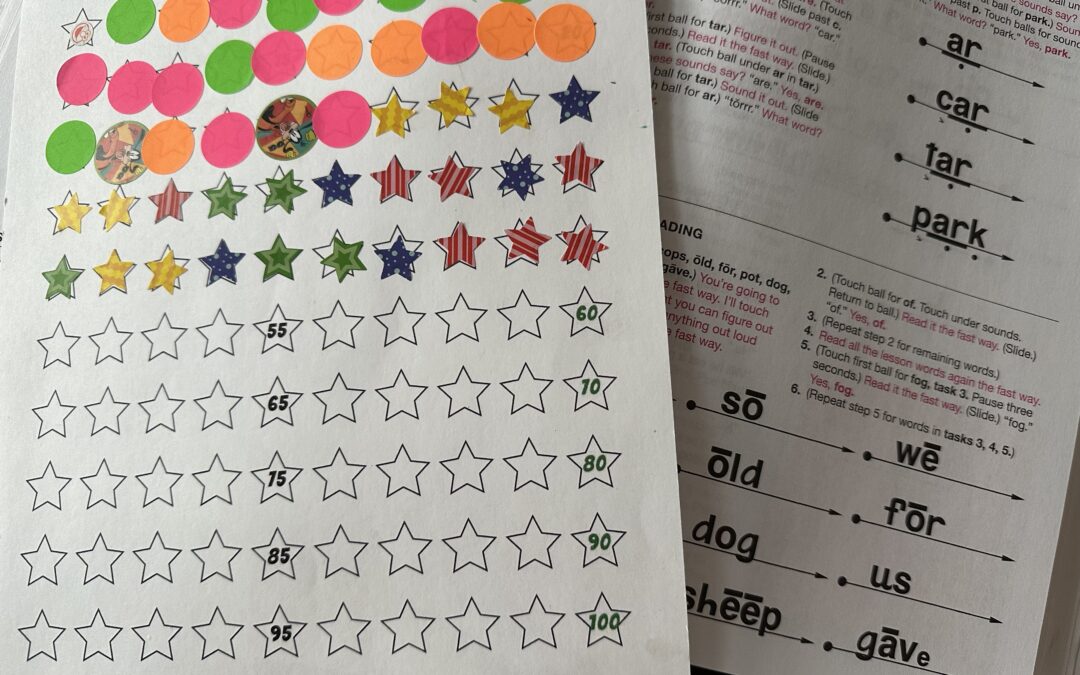
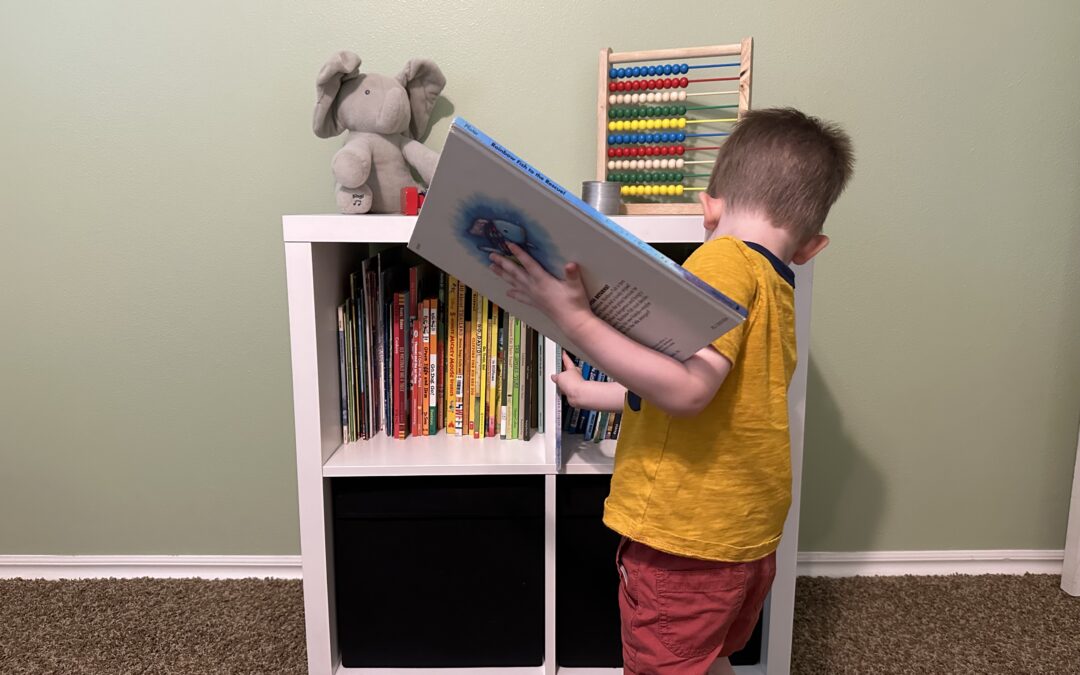
0 Comments